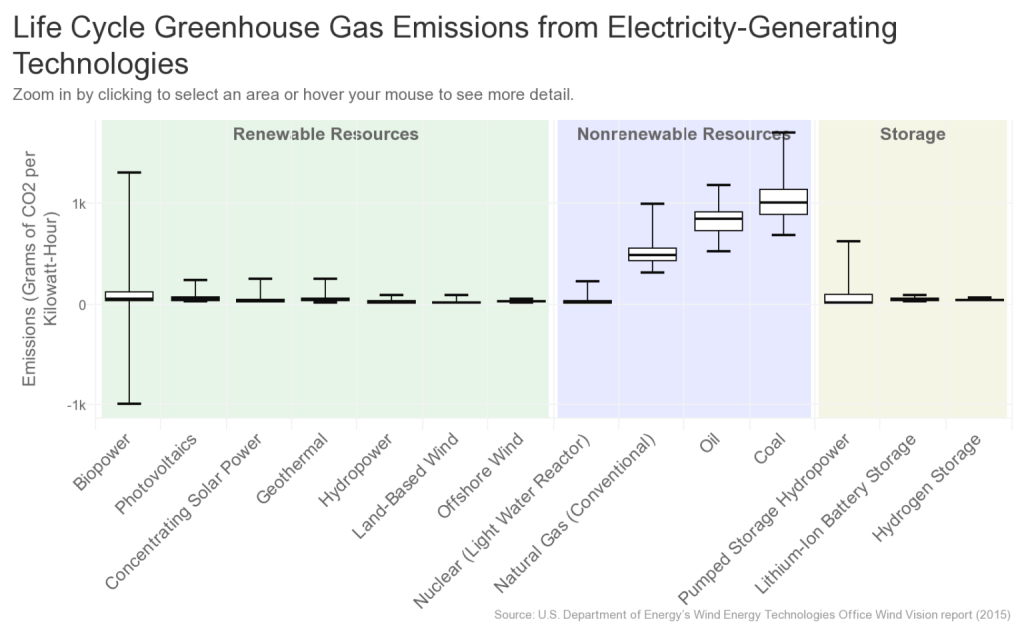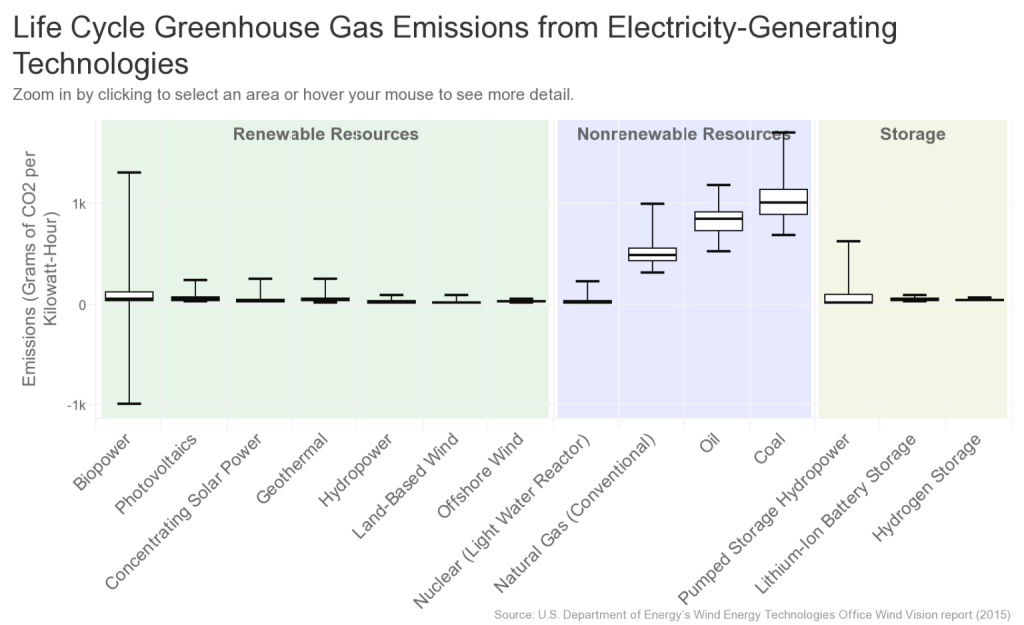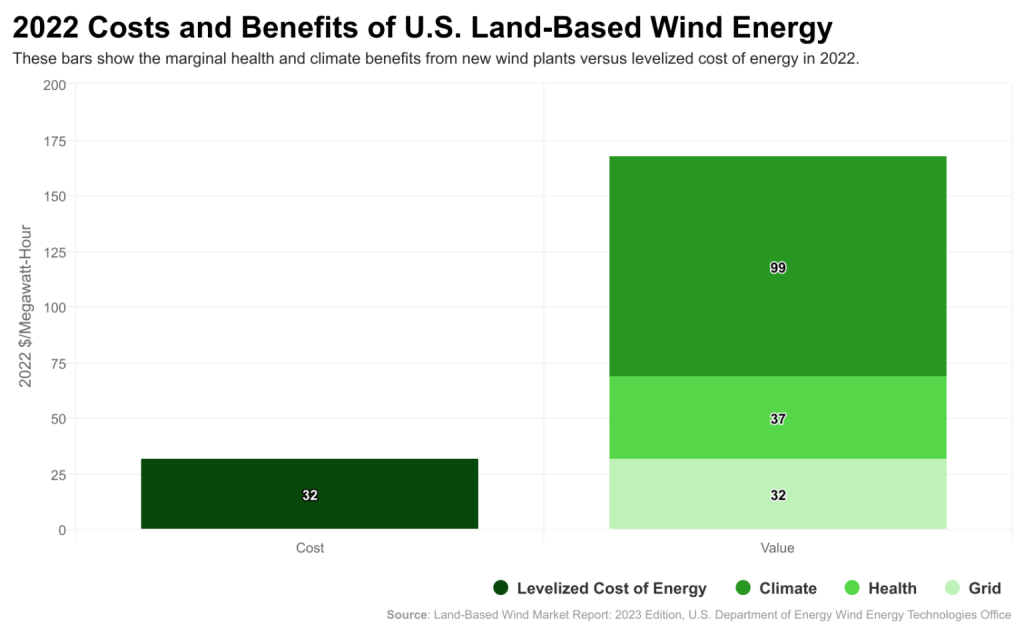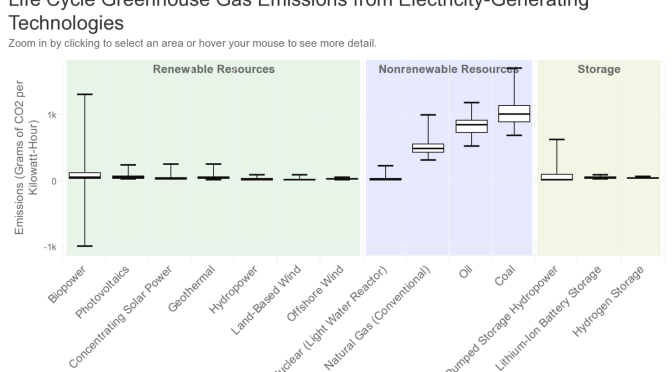But what is the monetary value of this benefit? Before diving into estimating the societal benefits of wind energy, let’s first look at the amount of carbon dioxide (CO2) emitted into the atmosphere from different energy technologies, as well as the impact of sulfur dioxide (SO2) and nitrogen oxide (NOx) on public health.

When looking at CO2 emissions, it is best to look at life cycle greenhouse gas emissions, which reflect all CO2 emissions over the entire lifespan of the technology—from equipment manufacturing and construction to operations and maintenance activities to plant decommissioning. Keep in mind that no CO2 is emitted into the atmosphere during wind-powered electricity generation.
In general, lifecycle greenhouse gas emissions from renewable sources are considerably lower than emissions from natural gas and coal. Wind energy produces around 11 grams of CO2 per kilowatt-hour (g CO2/kWh) of electricity generated, compared with about 980 g CO2/kWh for coal and roughly 465 g CO2/kWh for natural gas. That makes coal’s carbon footprint almost 90 times larger than that of wind energy, and the footprint of natural gas more than 40 times larger.

Shifting electricity production away from fossil generation sources to renewable sources has a significant impact on lowering CO2 emissions from the power sector.
During combustion for fossil-fueled electricity generation, other air pollutants—including nitrogen oxides (NOx) and sulfur dioxide (SO2) —are also released into the atmosphere. These gases often react to form particulate matter, smog, ground-level ozone, and acid rain. In turn, these resulting pollutants can cause adverse health effects, including asthma, bronchitis, lower and upper respiratory symptoms, and heart attacks. Air pollution is responsible for a large number of premature deaths relating to these illnesses.
Costs vs. Benefits of Wind Energy
Wind energy reduces emissions of harmful greenhouse gases and air pollutants, but how do these benefits compare to the cost of producing wind energy? Researchers from DOE’s Lawrence Berkeley National Laboratory reported on this issue in the Land-Based Wind Market Report: 2023 Edition.

he health and climate benefits of wind were impressive in 2022—with climate benefits contributing on average $99/MWh and health benefits contributing $37/MWh. When combined with the $32/MWh grid-system value of wind energy—that is, the value of the services wind energy provided to the grid, calculated based on market prices where and when wind energy was generated—the total value of wind energy is $168/MWh. This value is five times the average, unsubsidized levelized cost of energy (LCOE) of $32/MWh for U.S. plants installed in 2022. [LCOE is the average cost of electricity generation for a plant over its lifetime.]
The health benefits of wind were estimated in a similar manner. The monetized value of avoided SO2 and NOx emissions due to using wind energy was estimated by multiplying the amount of avoided pollutants by dollars of health damage per ton of emitted SO2 and NOx, as estimated by the Environmental Protection Agency. The health damage estimate is dominated by the cost of premature mortality due to population exposure to air pollution, but also includes increased hospitalization and workdays missed. The product of these two inputs produced the health benefit of $37/MWh for wind generation.
The Bottom Line
When looking at the cost of wind energy versus other technologies, it’s tempting to look at just the cost of running a wind plant or its grid-system value. However, these comparisons do not consider the societal benefits provided by wind and other emissions-free sources of energy, both in terms of fighting climate change and reducing harmful air pollutants. If these external—but real—benefits are part of the equation, wind energy might take off even faster than it is today.
Learn More: Check out the 2023 Editions of the Wind Market Reports to learn about the wind industry.


